 So I sort of wondered how I was going to do this, and I did various iterations of trying to review the D&D 5th Edition books after finishing up the Monster Manual, and the two core rulebooks with a lot of monsters (Volo's and Mordenkainen's), and... for the longest time, I really didn't know how to proceed, and while I was working on reviewing Volo's and Mordenkainen's, I wondered a lot on how I was going to do the rest of the 5E material. There are six campaign guides and around a dozen adventure modules, and those are where the bulk of the 5E material is around. Not to mention a bunch of ersatz 'Unearthed Arcana' online content, around ten or so online-exclusive PDF add-ons for some of the modules (including Mordenkainen's Fiend Folio, which we covered before) a bunch of special edition box-sets (particularly crossovers with Stranger Things, Magic: The Gathering and Rick & Morty)... and I wondered how I was going to do this. Do I review the campaign guides first? The adventure modules that I found interesting first?
So I sort of wondered how I was going to do this, and I did various iterations of trying to review the D&D 5th Edition books after finishing up the Monster Manual, and the two core rulebooks with a lot of monsters (Volo's and Mordenkainen's), and... for the longest time, I really didn't know how to proceed, and while I was working on reviewing Volo's and Mordenkainen's, I wondered a lot on how I was going to do the rest of the 5E material. There are six campaign guides and around a dozen adventure modules, and those are where the bulk of the 5E material is around. Not to mention a bunch of ersatz 'Unearthed Arcana' online content, around ten or so online-exclusive PDF add-ons for some of the modules (including Mordenkainen's Fiend Folio, which we covered before) a bunch of special edition box-sets (particularly crossovers with Stranger Things, Magic: The Gathering and Rick & Morty)... and I wondered how I was going to do this. Do I review the campaign guides first? The adventure modules that I found interesting first?And, well, I guess I'm just going to start off by going through (and reading through) the adventure modules one at a time as I read them. Chronological order is probably not going to be the hard and fast rule, but it's going to be kind of easier for me? This is going to cover the first four adventure modules, released in the year of 2014 to 2015, which, to those keeping track, puts the release of these books between the release of the core 5E set and Volo's, and a lot of these do have the vibe of just being more... vanilla, I guess? It's a lot of neat expansions to the things we're introduced to in the core set. The first two, Hoard of the Dragon Queen and The Rise of Tiamat, are you fighting a dragon cult and big bad Tiamat herself, because, well... Dungeons and Dragons, you know? It's half of the game's name. Princes of the Apocalypse pits adventurers against an elemental cult, and Out of the Abyss pits you against the Underdark and, hey, Demogorgon!
Also, while this is kind of something that I may go back and forth on, I'm not going to review at least the "NPC" bosses in these modules. Like, a lot of the enemies that you can face are actually just evil humans or elves with a name and a neat artwork or whatever, but I don't really count them as really 'monsters', and while I'll briefly acknowledge them, I'm not going to spend a lot of time talking about them. I'm going to review characters like, well, Tiamat or Imix, just like how I reviewed most of the Demon Lords and Archdevils that were statted in Tome of Foes, but for the most part, I'm going to more or less gloss over the NPC foes. This is kind of experimental, though, and if/when we get to the next batch of adventure modules, we'll see how I handle it.
- Click here for the previous part, where we cover Mordekainen's Fiend Folio
- Click here for the next part of Reviewing D&D Monsters, covering the second batch of adventure modules.
- Click here for the index.
Tyranny of Dragons

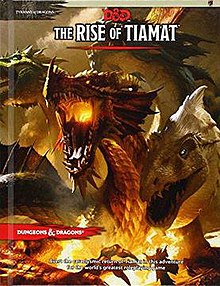
For the most part, I've only read the first of the 'Tyranny of Dragons' two-parter -- Hoard of the Dragon Queen -- and maybe half of The Rise of Tiamat, but a good chunk of it does feel like a pretty fun "your first big D&D adventure". You play as a group of adventurers going into a town under attack by a dragon cult, and you slowly make your ranks fighting Kobolds and dragon cultists and lesser dragon-esque creatures, going into underground caverns and defending a village before eventually going on the offensive to take down the Cult of the Dragon and uncovering the plot to bring Tiamat into the Material Plane. In the second book, you seek the help of the Metallic Dragons and other allies to finally take out the evil God-Queen Tiamat herself as she is summed to a caldera known as the Well of Dragons.
It's actually a pretty fun read, but for the most part both parts of this Tiamat two-parter uses a lot of monster stats from the base D&D set. Which ultimately makes sense, of course, from a game-making standpoint. You don't want your customers to buy all of the three huge books for the 'essential' set only to find that the adventure module barely uses any monsters from the Monster Manual. And being the first adventure module in D&D's 5th Edition, a significant amount of the monsters here are reusages of creatures from the Monster Manual -- kobolds, lizardfolk, dragons, bullywugs, trolls, a lot of the humanoid monsters... and, of course enemy NPC's. Since those are technically more character designs (granted, there are a lot of interesting evil NPC's here) and less monsters, I won't be covering them at all, just leaving them as a little footnote below.
Ambush Drake
We've covered the Guard Drakes in Volo's Guide to Monsters, although they originally debuted in 5E in this module. There sadly isn't really much in terms of lore for the Ambush Drake in the book itself, and they mostly show up alongside the Guard Drakes among dragon cultists. If they're anything like Guard Drakes, they're just giant reptiles created from a magical ritual from dragon scales, making them like weird dragon-homunculi. And where the Guard Drakes themselves were more muscular like, well, guard dogs, the Ambush Drakes' artwork and stats show them to look more ideal to slinking about. There's nothing overtly interesting about the Ambush Drake of 5E, it's just 'dragon lite'. And that's okay, it fills in a little slot in the adventure where you're fighting tiny quasi-dragons without cheapening the terror of actual dragons, but it also makes talking about them kind of hard.
3.5E's Ambush Drakes look a lot more monstrous and actually looks more like a draconic creature brought to life via a ritual, although I'm pretty sure that 3.5E's Drakes don't share that aspect with their 5E counterparts. I do really like the artwork, it looks pretty rabid and malformed.
Cult of the Dragon
As you go through and fight up the ranks, taking out kobolds, mercenaries and generic acolyte and cultist minions, you learn that the Cult of the Dragon is the one pulling the strings and trying to usher Tiamat's return. Again, there really isn't much to talk about here without going into the details of the story of the books, and I'm not about to summarize two books just to talk about a bunch of cultists. In the two books, in addition to repurposed stats from the 'humanoid enemies' in the Monster Manual, we get a unique artwork for the Dragonclaw, the lowest-ranking member of the actual Cult of the Dragon. He sure is a cultist dude with a dragon-themed helmet, and I like the weird blade he's holding. Slightly stronger than it is the Dragonwing, followed by the Dragonfang and Dragonsoul, the latter two only appearing in The Rise of Tiamat. The two stronger cultists are able to utilize an orb to simulate the powers of a dragon's breath... but ultimately these are just kinda there as slightly-different cultist minions. Again, there's nothing wrong with that and the whole point of the adventure is to have your characters fight against a dragon-worshiping cult, but ultimately there's really nothing too much to say here.
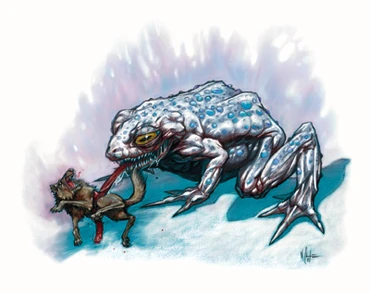
Ice Toad
And we're done with the unique monsters in Hoard of the Dragon Queen! That is fast, right? And we're moving straight into Rise of Tiamat, where the only real non-NPC enemy would be the Ice Toads, introduced here, not receiving artwork (that's a 3.5E artwork) and appearing in the icy lair of the white dragon Arauthator. And you think that the Ice Toads are just... well, giant frogs living in icy terrain, with ice-themed attacks. And you're not exactly wrong, but the Ice Toads are also sentient. It's explicitly noted that they can talk to each other in their own language, noted to be pretty smart, and they have enough awareness to spot your infiltrating group and they will try and interrogate you. That will probably serve to actually baffle most new players -- you would expect the trolls or kobolds to be sentient, sure, but the giant toads? Again, though, there really isn't a whole lot for me to say here.
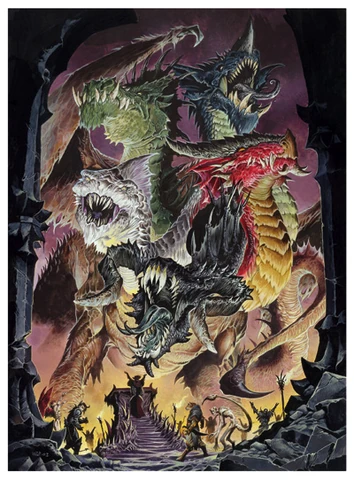
Tiamat, the Queen of Dragons
The rest of the enemies in the two modules are all NPC's of some sort, actual named characters that are extrapolations from character races and classes in the Monster Manual and Player's Handbook. You've got Langdedrosa Cyanwrath the blue half-dragon champion, Rath Modar the dragon-worshiping wizard cultist, various named adult or ancient dragons... all that jazz. But, of course, as you can probably guess from the title of the book, the whole point of the cult is to resurrect the mighty Tiamat, one of Dungeons and Dragons's oldest-running enemies. And since she's got a relatively unique design, I'm definitely going to talk about her in a bit more length. First appearing as "Chromatic Dragon" and borrowing her name from the Babylonian goddess of the sea, who is sometimes portrayed as either a dragon or a sea serpent. And... well, D&D's Tiamat has certainly taken a whole new identity of its own. It's always pretty neat to see just the simplicity of the design, and yet how cool the design of Tiamat still is to this day. What would be the 'boss' of the evil chromatic dragons you've been fighting over the different adventures through the Forgotten Realms? A larger, more giant dragon would kind of be boring, after all. But a giant dragon with five heads? Each head representing each of the five primary chromatic dragon breeds? Now we're talking. And from a design standpoint, that vibe about Tiamat, that she is everything evil about the five bickering chromatic dragon races combined into a single destructive force, as their goddess and queen, is pretty simple to be understood and, judging by her prominence in all D&D material since the 1st Edition, certainly one that has proven to be iconic. And, obviously, having five dragon heads means that all five of them can function independently in combat, and all five have access to that breed of dragon's breath weapon. Also surprisingly consistent is the fact that her tail is a tipped with a poison barb like a wyvern's.
Actually talking about Tiamat's lore is going to take us forever and a lot of reading through all five editions of D&D, but for the most part, in most editions Tiamat has remained consistent. She's a lawful evil dragon goddess, and for a while she was counted among the ranks of the Nine Hells despite not being an Archdevil herself (although, as it tends to be with D&D lore, older editions are wildly inconsistent about this). She basically just sort of hung out in her own layer in the Nine Hells. Also, Tiamat was a rival to the Platinum Dragon Bahamut, her brother and eternal rival.
Being a goddess, Tiamat is also apparently able to appear in avatars and other mortal forms, smart enough to deceive mortals to work under her command... but, of course, all she really cared about are her own dragons (and even then, 'care' is perhaps too strong of a word) and greed. That's basically her biggest motivation, the distillation of how chromatic dragons are portrayed in D&D -- she's greedy and she's angry, so she wants to take over all the realms and rule it as her own personal prize. And, well, at least as far as these two adventures are concerned, to break free from the Nine Hells. I really don't have a whole ton to say about that other than noting just how cool Tiamat as a visual design is. A pretty cool final boss for a campaign that revolves all around dragons and their worshipers.
________________________________________________________
Princes of the Apocalypse

After the Tyranny of Dragons two-parter, the next adventure module is a bit more... sandbox-y, I suppose? The plot this time around pits adventurers to uncovering a cult once more, but instead of a single cult dedicated to a single villain, we've got four cults active at the same time, and they're devoted to the Elder Elemental Eye. The Elder Elementals trying to enter the material plane has been a neat staple of previous editions, so yeah, a lot of these earlier adventure modules are just here to re-establish these parts of the D&D lore in the new 5th Edition.
Howling Hatred Cult
A good chunk of this module does revolve around the four Elemental cults, and it's been a while since I read the specifics of it, but the essence of the adventure has our heroes fight against the various cults. The cult of Air is called the Howling Hatred, and they are apparently idealist that are lured into joining with notions like 'detachment from material possessions and physical desires'... or just believing the note in the recruitment brochure that the Elemental Cult of the air can let them fly. They're kind of manipulators, and, because they're air cultists, they use tornadoes and cyclones in battle. And because they are, y'know, cultists, their members are indoctrinated and basically made to tolerate and justify human sacrifice and stuff. Kind of obvious, right? The thing is, each of the four cults will cooperate with some of the other cults, but will have one that they really, really hate. In this case, the Air cult really hates the Earth cult.
The book gives stats for three generic minions -- the Feathergale Knight (which are rich people who ride hippogriffs and giant birds to become self-proclaimed knights), the Howling Hatred Initiate (mook acolytes), the Howling Hatred Priests (these can actually make tornadoes and turn into air), the Hurricane (they are disciplined cultists who see the world in slow-motion) and Skyweaver (yolo magic-shooting lunatics). Out of these, only the Howling Hatred Priest got any dedicated artwork, although that sure is a very fancy-looking raven-feather cloak. The Priests are supposed to be gaunt, sallow-faced and malformed bodies that show that they've been sustaining themselves on nothing more than air, although I guess in the artwork that particular dude is hiding his malformed body under that cloak? All the cults come with their leadership figures, and for the air cult we've got three elite characters... but it's really hard to discuss them without going too in-depth into the story. So I'm not going to.
Black Earth Cult
The Black Earth Cult are, of course, people who worship the Elemental Earth and are noted to be particularly dreary, with their cult consisting of murderers, lunatics and nihilists, and they want to reduce all to rubble. Unlike their hated air cultists, they are willing to work alongside subterranean monsters. They're single-minded and stubborn... basically the 'brute' of the four cults to contrast the haughty Howling Hatred.
Unlike the Howling Hatred, we get two different art pieces! And among the generic cultists, we've got the Black Earth Guard (knights dressed in armour of stone, and can't be moved from where they are standing); the Black Earth Priest (spellcasters with earth-themed spells); the Burrowshark (THEY RIDE BULETTES), the Sacred Stone Monks (they are monks that are strong like the earth) and the Stonemelders (earth-spell spellcasters). But really, clearly the most interesting thing here is the Burrowshark. How cool is that? A dude in rock armour riding a Bulette and bursting in and out of the ground to harass the enemy? I also like the detail that all these fancy rock armour are designed to break down should the cultist wearing it die, to prevent grubby-fingered adventurers from looting it. And I know that I won't discuss too much of the other cult leaders, but the Black Earth Cult has the most interesting leaders -- an angry blind evil monk, an earth-genasi sorcerer who controls mud, and a male medusa. I didn't even think that the medusa race would be perfect to be earth-elemental cultists, they already have the capability to turn people into stone!
Eternal Flame Cult
Yeah, the writers and art team really like the Fire and Water cults a bit more, huh? We get four artworks for four types of mooks (pictured: Eternal Flame Priest, Eternal Flame Guardian, Razerblast, Flamewrath) The Eternal Flame cult is basically what you expect the obligatory fire nation to be. Destructive pyromaniacs obsessed with the cleansing and all-destroying power of flame. In action, they're all direct and impulsive, and, of course, they hate the Water cult which is all about subtleties and ruses.
We've got a bunch more mooks -- the Eternal Flame Guardian (pyromaniacs); the Eternal Flame Priests (pyromaniacs that pray); the Flamewrath (pyromaniacs who can set themselves on fire) and the Razerblast (pyromaniacs with a heart of literal fire that can blow up). Out of these, the Razerblast is probably the coolest, particularly with their medieval Magma Iron Man armour and the fact that they are very video game-y in their ability to blow up.
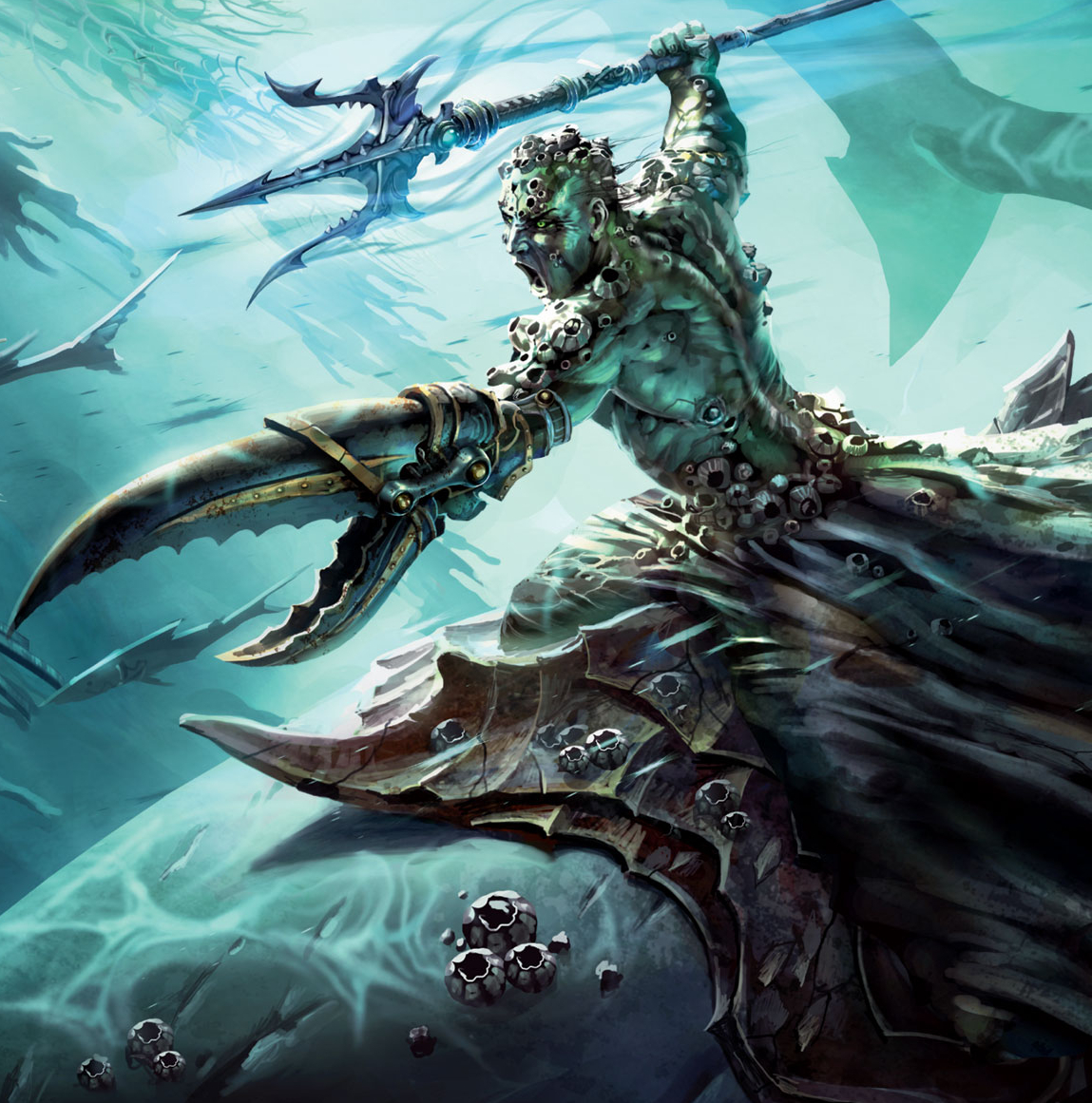
Crushing Wave Cult
The Crushing Wave Cult is pretty cool, and in no small part because they make a reappearance in the Ghosts of Saltmarsh module, which I really do love. And... well, the same sort of cult malarkey continues here. The water is a force of destruction and evil; they want to make the world bow to the force of water that can sink anything, and are quick to adapt because water can be anything. They hate the cult of Fire, they want to bring their Elemental Lord into power. All that jazz. Also, I know I don't want to talk about any of the leaders, but the leader of the Crushing wave, Gar Shatterkeel, is a barnacle-encrusted man with a giant crab claw that replaces one hand, wielding a trident in another and rides a shark around. He is way cooler than any of the other chumps leading the other cults, I'm sorry.
As usual, they've got a batch of random minions to select from. The Crushing Wave Priest (crazy fanatics with ice/water spells); the Crushing Wave Reavers (footsoldiers that would be boring if they didn't have shark-tooth swords and crab-shell shields); the Dark Tide Knight (they ride seahorses and sharks and stuff, pretty awesome); the Fathomer (green-skinned, shape-shifting assassins and spies) and the One-Eyed Shiver (spellcasters that rip out one eye to replace it with an orb of ice). These really look varied and look more like evil pirates or nautical enemies, and no wonder they show up again in the very aquatic-themed Ghosts of Saltmarsh. I really do like the hilarity of the Dark Tide Knight -- they didn't specify what aquatic creature these guys ride, so they might ride on top of a giant sea slug for all we know. And the One-Eyed Shiver can basically pretend to be a pirate when he's hiding his orb of frost with an eyepatch.
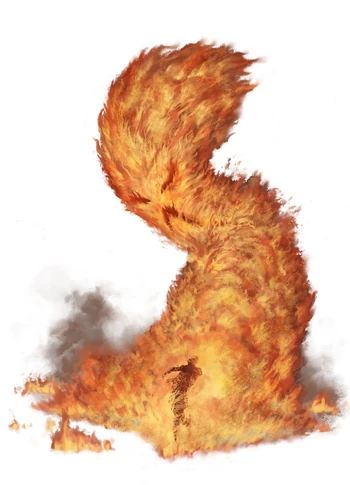
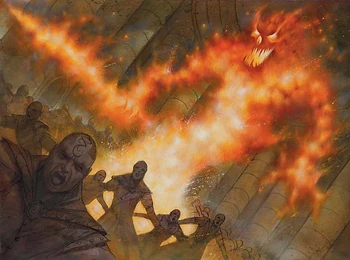
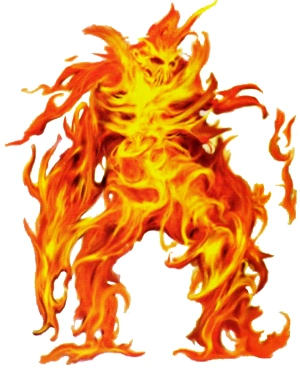
Imix
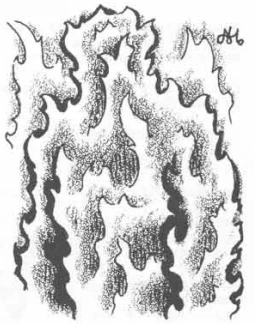 And here we go with the actual Elemental Princes! They have been around since the first edition, and have been basically the main big bads in any sort of adventure featuring the elementals pretty heavily. Also, while the lore behind them isn't 100% the same, they're also the ones that have inspired World of Warcraft's own Elemental Lords. The first of these we'll be talking about is the Fire Lord Imix, the Eternal Flame. In 4th Edition, these Elemental Princes will show up in Monster Manuals alongside the likes of Orcus and Demogorgon as 'end-game' bosses you might have in your campaign. And I've always liked the idea of the elemental forces. See, unlike their cultists or other forces like demons or dragons, the elementals doesn't give a shit about anything going on, and just want to destroy everything. As the epitome of chaotic evil (more on the 'chaos' and not so much evil) Imix, well, just wants to burn everything. They are evil, sure, but they don't care about subjugating or spreading philosophy. Imix just wants to watch the world burn, man, the world that has laws of physics to restrain the glorious burning of fire. How dare you, world.
And here we go with the actual Elemental Princes! They have been around since the first edition, and have been basically the main big bads in any sort of adventure featuring the elementals pretty heavily. Also, while the lore behind them isn't 100% the same, they're also the ones that have inspired World of Warcraft's own Elemental Lords. The first of these we'll be talking about is the Fire Lord Imix, the Eternal Flame. In 4th Edition, these Elemental Princes will show up in Monster Manuals alongside the likes of Orcus and Demogorgon as 'end-game' bosses you might have in your campaign. And I've always liked the idea of the elemental forces. See, unlike their cultists or other forces like demons or dragons, the elementals doesn't give a shit about anything going on, and just want to destroy everything. As the epitome of chaotic evil (more on the 'chaos' and not so much evil) Imix, well, just wants to burn everything. They are evil, sure, but they don't care about subjugating or spreading philosophy. Imix just wants to watch the world burn, man, the world that has laws of physics to restrain the glorious burning of fire. How dare you, world.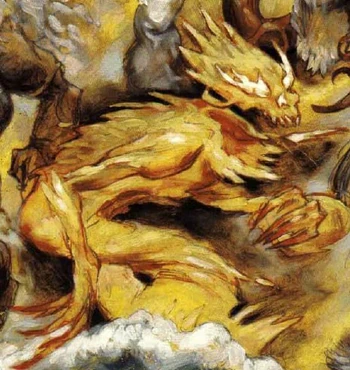 As with their own followers, the Prince of Evil Fire and Water hate each other, and Earth and Air also hate each other. But they will work together when something called the 'Elder Elemental Eye', the huge plot device of the adventure, is involved, whose nature is pretty ambiguous... but it'll bring all four Princes together along with their cults. These Elemental Princes can only enter the material plane through Elemental Nodes, which are basically themed locations where the power of their element is strong. (In Imix's case -- a volcano.) And, sure, they have cultists, but the cultists are more annoying parasites to them that draw power from them and the Princes are literally just using them until they can rampage in the material plane.
As with their own followers, the Prince of Evil Fire and Water hate each other, and Earth and Air also hate each other. But they will work together when something called the 'Elder Elemental Eye', the huge plot device of the adventure, is involved, whose nature is pretty ambiguous... but it'll bring all four Princes together along with their cults. These Elemental Princes can only enter the material plane through Elemental Nodes, which are basically themed locations where the power of their element is strong. (In Imix's case -- a volcano.) And, sure, they have cultists, but the cultists are more annoying parasites to them that draw power from them and the Princes are literally just using them until they can rampage in the material plane.Imix started off his original D&D look as nothing but formless flame, but 2E (probably my favourite) gave him the form of a regular, genie-esque fire elemental with a skull-head, and 3E made him a walking giant skeleton made out of flame. 4E goes back to basics with just a mass of flame vaguely in the shape of a humanoid figure. 5E's Imix, though, is just a massive pillar of fire shaped like a tornado ready to burn everything in its path. And it has an angry face on it. Aww, Imix. It's a lot less imposing than his more partially-humanoid 2E-4E forms, but I can see why they went in this direction. It's to make Imix feel a lot more primal, like he is flame itself. After all, as the most destructive and the most don't-give-a-shit of the four Princes, he would be the one least concerned with his appearance. Not much to really say here, he's a burning mass of flames.
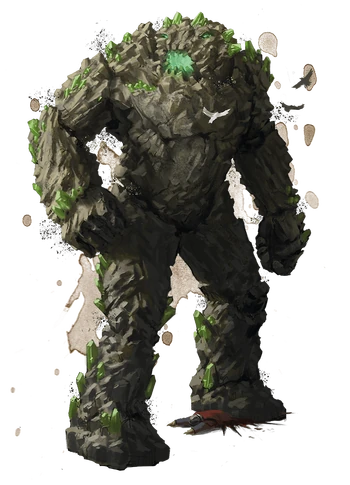
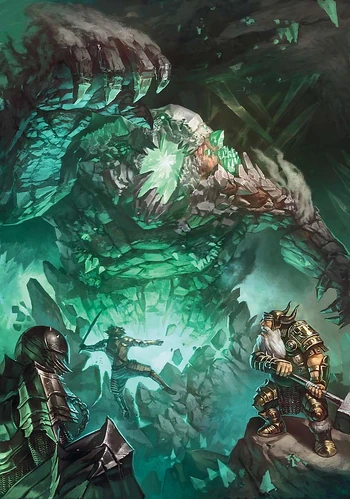
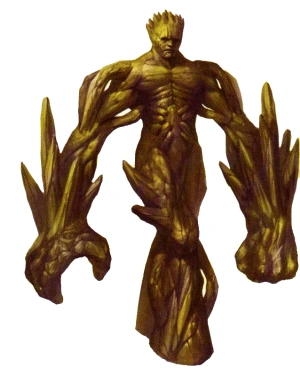
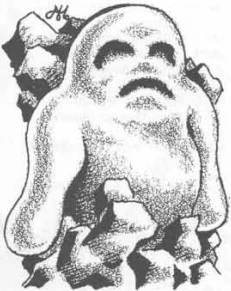
Ogrémoch
Ogremoch (technically Ogrémoch, but I don't want to find the accented e every time I type his name), the Mountain that Walks, is the Prince of Evil Earth, and visually I think he's the one who has changed the most. Look at that adorable 1E Ogremoch who is just a lumpy clay baby with barely-molded arms! Look at that, that's the face of a village-swallowing earthquake! 3E turned Ogremoch into swole Groot, then 4E probably has my favourite Ogremoch who is just a giant golem that is made entirely out of sharp rock shards and gemstones. 5E goes for the golem look again, and while he still has a mouth filled with fangs... I dunno. Sure, he's a big rock golem thing, but I don't think he's quite as impressive as 4E Ogremoch.
Where Imix is happy to burn everything, Ogremoch is noted to be a bit of a miser and hoards treasures... but not before destroying all that's in his path. Being made out of earth and stone, he's also willing to just endure and outlast anything else. Ogremoch hates civilized races most who have 'stolen' stone, gems, metals and whatnot from the earth, which is actually a very, very interesting take on a being that represents the evil side of the element of earth. And out of the main four princes, he's the one that has something he really wants to do -- destroy all the mines, settlements and quarry in the area near where he's summoned for the principle of the thing.
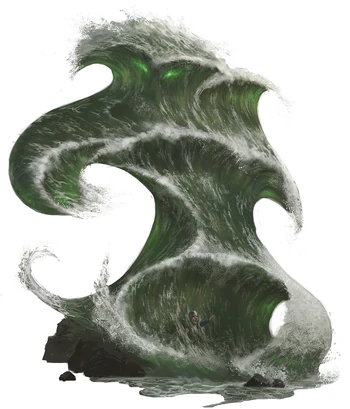
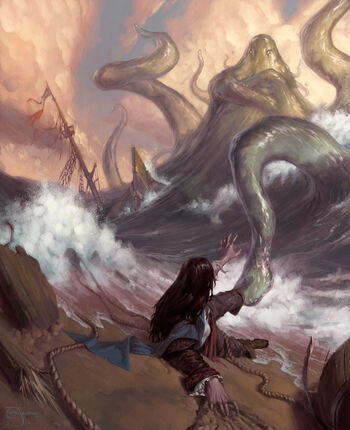
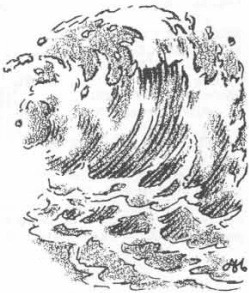
Olhydra
Disclaimer: not actually a hydra. Like Imix, 1E Olhydra is just a picture of a bunch of waves in the ocean. Calling herself the Crushing Tide or the Well of Endless Anguish, Olyhdra always takes the form of a gigantic wave -- and I really do like both her 4E and 5E depictions here. On one hand, 5E's more nebulous form, just a mass of waves that is barely arranged in some sort of shape, and only with two glowing eyes -- that's creepy as all hell. But the giant octopus made out of clear water from 4E? Sure, octopus sea-elder-beings are a bit played out with all the krakens and Cthulhus running around, but come on, that's still a pretty cool image.
Olhydra is noted to be ruthless to drown and destroy anything within the reach of water -- marine towns and ships -- but is otherwise patient enough to use pirates and other evil sea creatures as her agents, and to flow back into her realm of the seas and wait for another chance to beat up the enemy. It's interesting how the prose does note how Olhydra seems to limit herself when possible and will only do the whole tsunami thing if she is really pissed.
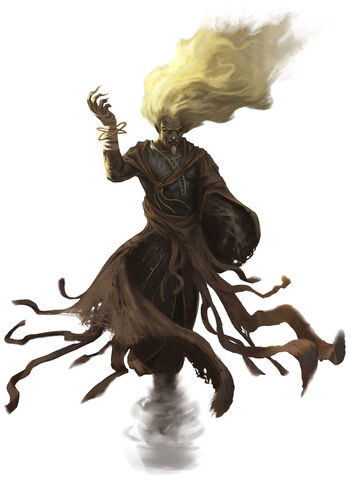
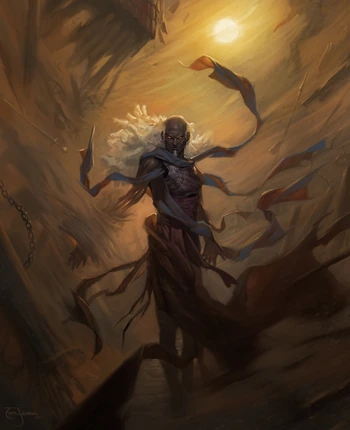
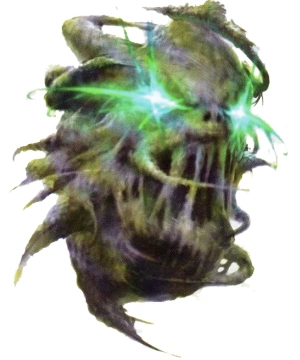
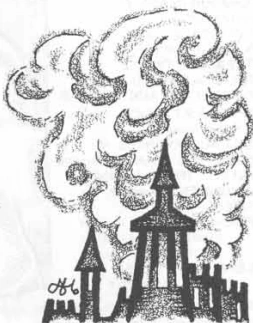
Yan-C-Bin
Okay, what is that name supposed to be? I'm actually curious if "Yan-C-Bin" is actually supposed to be taken from something, cause it just sounds so... different. And honestly, Yan-C-Bin himself is the most different out of the quartet, because, 1E artwork aside, he's the only one that's not just a mass of his element. 3E briefly depicts him as an angry smoke-skull with glowing eyes, but in 4E and 5E, Yan-C-Bin appears as this humanoid figure with a tattered robe, bandages, long white hair that whirl around in the wind and also steps on a tornado. If this was an anime, clearly Yan-C-Bin is the strongest, he's the most humanoid! And you think that I would hate him since I tend to dislike the less-monstrous members of a set when reviewing these monsters... but in this case, I actually find Yan-C-Bin looking so humanoid to be particularly unsettling. And it's not like we haven't seen this trope before, but the 4E artwork in particular is really great at making sure that the audience knows that there's something not quite right about Yan-C-Bin and that he's no mere old man. Yan-C-Bin is noted to be the plotter among his brethren, actually preferring hit-and-run attacks, but is willing to attack -- either in the form of his gaunt human-esque form or as a gigantic 30-feet-high tornado. Of course, like the other elemental lords all he wants is to destroy all the world under his heel.
And... and that's about it for the Elemental Lords! I am actually surprised I have something to say about all of them.
Other monsters that are relatively notable and not just an NPC in service of the Elder Elemental Eye include a Young Purple Worm (which is, well, a smaller Purple Worm) and a Molten Magma Roper, which is a Roper that is infused with the power of the elemental fire. It's not quite as often in subsequent modules, I feel, but these earlier ones do have a fair bit of 'modified' monsters.
_________________________________________________Out of the Abyss

...and here we go to the final 'big' sourcebook for this session, Out of the Abyss. As you can see with the screaming visages of Demogorgon on the cover, Out of the Abyss focuses on demon lords! In fact, a lot of the demon lord stats and lore we see in Volo's and Mordenkainen's came from this book originally, which is why we're not going to have a whole lot to really talk about. Again, I'm not here to talk about the adventure module itself, but this is one that I've read through and the general vibe of your characters struggling to understand the clashing cultures (and clashing cults) in the drow cities of the Underdark as the three demon lords -- the mad prince Demogorgon, the fungal queen Zuggtmoy and the dumb slime lord Juiblex -- have been straight-up released, and the adventurers have to try and pit the demon lords against each other and take out the weakened last one standing.
Monster-wise... this is a very thick tome, with a lot of NPC's. But also a lot of monsters! It's just that we've covered a lot of them in previous parts. In addition to Underdark denizens and a bunch of other new things like the Derro and Duergar variants (we covered them in the later-published Mordenkainen's Tome of Foes), but the book also features monsters like, Two-Headed Grimlocks, Deep Gnome Were-rats, the Spider King (a two-headed giant spider), various Duergar variants (some of which get reprinted in Tome of Foes), Giant Riding Lizards (for your characters to ride), spore-enslaved Quaggoths and Hook Horrors, Jade Spiders (reskinned Stone Golems), Fiendish Giant Spiders (giant spiders with extra elemental resitances) and the like. I'm not going to really talk about them all at all, but they do give some neat examples of how you can take the statblocks in the Monster Manual and modify them to whatever you need for your adventure.
Giant Rocktopus
A lot of the creatures in this adventure are either, again, NPC enemies or just enemies from the Monster Manual that are suited to the Underdark, but one of them is a neat little standout for me -- one of the earlier potential random encounters is a "Rocktopus", described by the book as an octopus adapted to life on land, behaves like a regular octopus (except living on underground caves) and can camouflage into the rock. Very Legend of Zelda, and the dad-pun-tier name is neat. Not too much to really say here, though -- sometimes these D&D modules will just have a random 'okay, it's X monster but with an extra feature or two'.
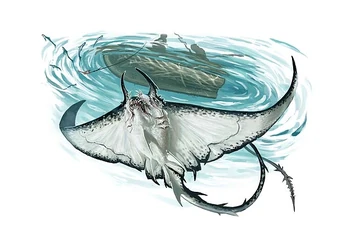
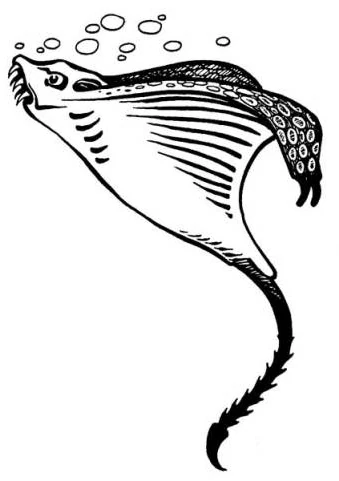
Ixitxachitl
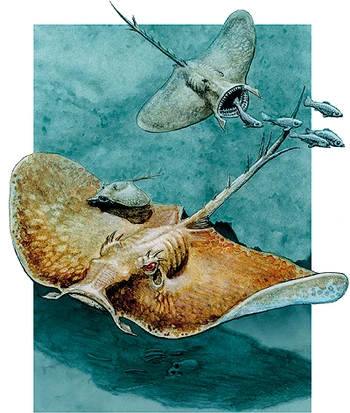
We covered the Ixitxachitl briefly before when we talked about the 1st Edition Monster Manual... but hoo boy, it's been a hot while, huh? I always found it funny that within 1E's original set of monsters, these demon-worshiping intelligent manta rays are already part of the original vision for Dungeons and Dragons. In this adventure, the Ixitxachitl are all beings that are loyal to Demogorgon, serving him alongside a city full of Kuo-toa. This adventure brings three variants -- a regular Ixitxachitl, an Ixitxachitl Cleric, and a Vampiric variant of the Ixitxachitl, because intelligent manta rays aren't quite wacky enough. And I stress that I absolutely love this. Demonic manta rays that capsize boats and eat flesh is one thing. Demon-worshiping, intelligent manta rays, some of which are priests and vampires? That's another thing entirely.
5E's take on the Ixitxachitl basically plays up on the often-exaggerated features of the real-life manta ray, although the very butterfly-esque outline of the 5E Ixitxachitl is a rather wild variation. The 'horns' that are like fleshy nubs in the real-life manta ray are now demonic horns, and it's got a mouth more similar to real-life sharks more than rays. As the prose notes, the Ixitxachitl also has little nubby arms near its mouth, which... really can't add that much practicality, but okay. We get a neat little description of how the Ixitxachitl live, hatching from eggs as tiny baby demon rays, then working with their colony to hollow out massive coral reefs and essentially strip entire swathes of the ocean bare. Also, they worship demons, because, hey, why not? Intelligent manta rays, right? I want to make a special shout-out to 3E's Ixitxachitl, which look far, far more silly, being based on something resembling the eagle ray and having a far less threatening, goofy-looking ray face. And look at that baby Ixi latching on to its parent! Anyway, one of my all-time favourite wackos from this franchise for sure.
Awakened Zurkhwood
One of the major areas in Out of the Abyss is a massive fungal-filled underground cavern, filled with all sorts of wacky fantasy mushrooms like the Barrelstalk, Fire Lichen, Trillimac and Nilhogg's Nose. One of them is called the 'Zurkhwood', basically a fungus the size of a tree and the source of both timber and the Underdark's equivalent of grain, taken from its spores. Some of them can end up 'awakening', like Awakened Trees in the Monster Manual. They're basically like, Treants, but instead of being living trees they are giant mushrooms. Pretty neat and atmospheric, and it's just kind of a shame they don't get any sort of artwork.
Bridesmaid & Chamberlain of Zuggtmoy
Queen of Fungi Zuggtmoy's plan is to sort of 'wed' herself to one of the greatest fungi in the material plane and that will somehow strengthen her hold on the material plane. Who am I to question how the fungal people behave? Zuggtmoy's got a couple of additional minions beyond the Myconid people she has enthralled to worship her -- the weaker Bridesmaid of Zuggtmoy is described as 'plant creatures with vaguely humanoid bodies', which are covered with glow-in-the-dark lichen; whereas the Chamberlain of Zuggtmoy are masses of humanoid blue mold with only a barely-discernible face. I imagine they aren't exactly Myconids, since I don't think they're meant to actually be actual mushroom-people and more like extensions of Zuggtmoy herself. Obviously, they have spores that can infect adventurers and stuff.
_________________________________________________
Lost Mine of Phandelver
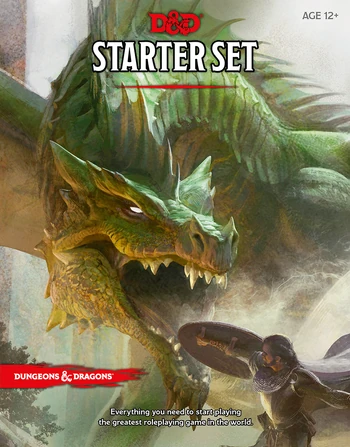
The Starter Set came with a little mini-adventure and basically all a gaming group needs -- and it comes with its own adventure, Lost Mine of Phandelver. It's a short, fun 'town in distress' adventure culminating with fighting a dragon, but there aren't any new monsters in this one and, of course, we're all here just to talk about monsters. Being, y'know, a starter set, obviously all the monsters here are taken from the Monster Manual, and it does feel like a Starter Set -- a lot of it is just 'oh hey look at this cool Grick, and this cool Nothic, and this cool Hobgoblin general' to give the players a taste.
Ash Zombie
The only unique 'common' monster (all the others are basically mini-bosses or named NPC's) is the Ash Zombie, which is slightly-stronger versions of the regular zombies but with the additional ability to unleash an 'Ash Puff'. They're apparently the zombified corpses created from a magical explosion, fusing them with ash or something. Kind of a neat variant, but ultimately not particularly noteworthy.
_________________________________________________
Sword Coast Adventurer's Guide & Elemental Evil Player's Companion
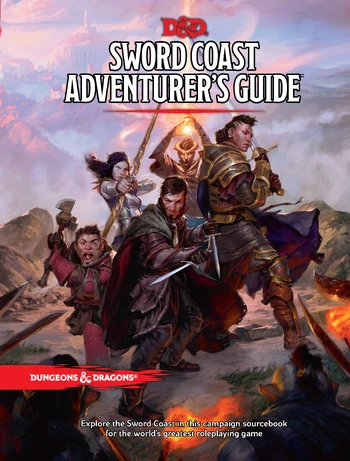
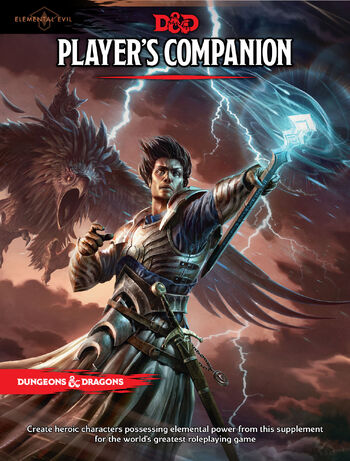
A bunch of little bookkeeping here, since we're trying to be as exhaustive as possible. The Sword Coast Adventurer's Guide is the first of 5th Edition's "setting guide" sourcebook, where the entire book is just telling you in loving detail about one of the 'canon' settings of Dungeons and Dragons's many, many different fantasy settings, and being, well, a setting guide, mostly it talks about the culture, the cities, and the geography of the region. In this book, we cover the Sword Coast, which is a pretty standard European fantasy land that a majority of these early adventures take place in. And it's important, actually, that D&D publishes books like this not to be an example for when you want to expand into different genres of fantasy, but also as a neat little reference to what a 'standard' fantasy world is. At times these sort of books get a bit too... detailed on some minutiae on how the world itself works, but, again, it's necessary to get some of this over with to set some, well, ground rules of the world. This book doesn't really cover any of the monsters or whatever that we don't already talk about in the Monster Manual, and most of the new race/monster lore revolves around the playable races in the Player's Handbook. We also add a bunch of extra class options, character backgrounds and spells... but I tried talking about them and all I managed to do is sound like an encyclopedia.
And we're closing this segment of the D&D 5th Edition with the Elemental Evil Player's Companion, sort of a supplementary guide to the Player's Handbook. For the most part, we've covered the main appeal of this handbook here, because this is where a bunch of non-standard character races are originally statted out to be used by players. Mostly the Aarakocra, Genasi and Goliath, plus the Deep Gnomes. Nothing against the book, which is actually relatively short, but there just isn't too much content here for me to talk about, just a neat little expansion with playable races and spells.
~~~~~~~~
Hoard of the Dragon Queen:
The stats for Guard Drake is also originally printed in this book before it shows up in Volo's Guide to Monsters. As you can see, most of the 'new' or unique enemies in these adventures are some sort of humanoid NPC character, and basically the many creatures here I don't cover above could just be assumed to be fight-able characters in the story itself. Most notable to me, of course, is the crazy bullywug chieftain Pharblex Spattergoo.
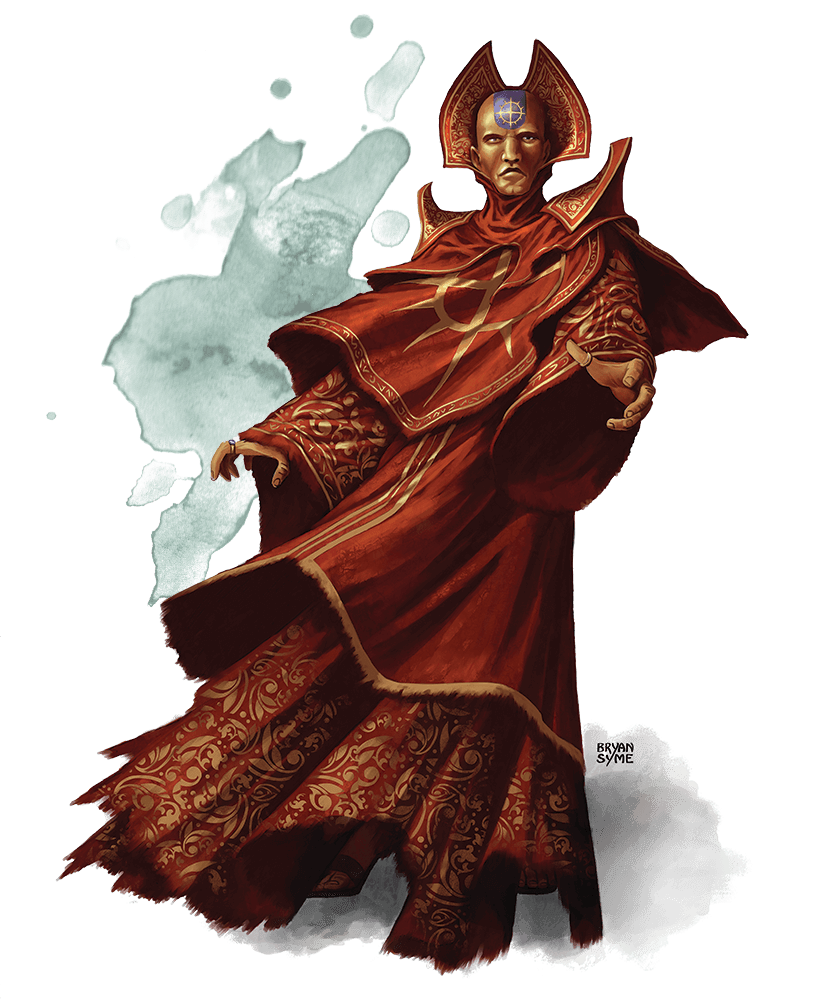


- Ambush Drake: Medium dragon; unaligned; CR 1/2
- Azbara Jos: Medium humanoid - human; lawful evil; CR 4
- Blagothkus: Huge giant - cloud giant; neutral evil; CR 9
- Captain Othelstan: Medium humanoid - human; lawful evil; CR 5
- Dragonclaw: Medium humanoid - human; neutral evil; CR 1
- Dralmorrer Borngray: Medium humanoid - high elf; neutral evil; CR 3
- Frulam Mondath: Medium humanoid - human; lawful evil; CR 2
- Jamna Gleamsilver: Small humanoid - gnome; neutral; CR 1
- Langdedrosa Cyanwrath: Medium humanoid - half-dragon; lawful evil; CR 4
- Pharblex Spattergoo: Medium humanoid - bullywug; chaotic evil; CR 3
- Rath Modar: Medium humanoid - human; lawful evil; CR 6
- Rezmir: Medium humanoid - half-black-dragon; neutral evil; CR 7
- Talis the White: Medium humanoid - half-elf; lawful evil; CR 5
Rise of Tiamat:
The stats for several monsters from Hoard of the Dragon Queen are reprinted in this book.




- Dragonfang: Medium humanoid - human; neutral evil; CR 5
- Dragonsoul: Medium humanoid - human; neutral evil; CR 7
- Dragonwing: Medium humanoid - human; neutral evil; CR 2
- Ice Toad: Medium monstrosity; neutral; CR 1
- Naergoth Bladelord: Medium undead; neutral evil; CR 11
- Neronvain: Medium humanoid - elf; neutral evil; CR 9
- Severin: Medium humanoid - human; neutral evil; CR 11
- Tiamat: Gargantuan fiend; chaotic evil; CR 30
Princes of the Apocalypse:
The stats for the Elemental Myrmidons were originally printed in this book.




- Aerisi Kalinoth: Medium humanoid - elf; neutral evil; CR 7 or 9
- Ancient Construct: Large construct; unaligned; CR 4
- Bastian Thermandar: Medium humanoid - fire genasi; neutral evil; CR 8
- Black Earth Guard: Medium humanoid - human; neutral evil; CR 2
- Black Earth Priest: Medium humanoid - human; neutral evil; CR 3
- Bronzefume: Gargantuan dragon; neutral; CR 13
- Burrowshark: Medium humanoid - human; neutral evil; CR 4
- Crushing Wave Priest: Medium humanoid - human; neutral evil; CR 2
- Crushing Wave Reaver: Medium humanoid - human; neutral evil; CR 1/2
- Dark Tide Knight: Medium humanoid - human; lawful evil; CR 3
- Drannin Splithelm: Medium humanoid - shield dwarf; neutral evil; CR 7
- Elizar Dryflagon: Medium humanoid - human; neutral evil; CR 5
- Eternal Flame Guardian: Medium humanoid - human; chaotic evil; CR 2
- Eternal Flame Priest: Medium humanoid - human; neutral evil; CR 3
- Fathomer: Medium humanoid - human; neutral evil; CR 2
- Feathergale Knight: Medium humanoid - human; lawful evil; CR 1
- Fennor: Medium humanoid; chaotic; CR 3
- Flamewrath: Medium humanoid - human; chaotic evil; CR 6
- Gar Shatterkeel: Medium humanoid - human; neutral evil; CR 9 or 13
- Ghald: Large humanoid - sahuagin; lawful evil; CR 7
- Grumink the Renegade: Medium humanoid; chaotic evil; CR 8
- Hellenrae: Medium humanoid - human; lawful evil; CR 5
- Howling Hatred Initiate: Medium humanoid - human; neutral evil; CR 1/8
- Howling Hatred Priest: Medium humanoid - human; neutral evil; CR 2
- Hurricane: Medium humanoid - human; lawful evil; CR 2
- Imix: Huge elemental; neutral evil; CR 19
- Marlos Unrayle: Medium monstrosity; neutral evil; CR 8 or 12
- Miraj Vizann: Medium humanoid - earth genasi; neutral evil; CR 6
- Molten Magma Roper: Large monstrosity; neutral evil; CR 11
- Nurvureem: Huge dragon; chaotic evil; CR 14
- Ogremoch: Huge elemental; neutral evil; CR 20
- Olhydra: Huge elemental; neutral evil; CR 18
- One-Eyed Shiver: Medium humanoid - human; chaotic evil; CR 3
- Oreioth: Medium humanoid - human; chaotic evil; CR 2
- Padraich: Medium humanoid; chaotic; CR 2
- Razerblast: Medium humanoid - human; chaotic evil; CR 5
- Rhundorth: Medium humanoid - dwarf; lawful good; CR 1/8
- Sacred Stone Monk: Medium humanoid - human; lawful evil; CR 1/2
- Shoalar Quanderil: Medium humanoid - water genasi; lawful evil; CR 4
- Skyweaver: Medium humanoid - human; chaotic evil; CR 3
- Stormmelder: Medium humanoid - human; neutral evil; CR 4
- Thurl Merosska: Medium humanoid - human; lawful evil; CR 3
- Vanifer: Medium humanoid - tiefling; neutral evil; CR 9 or 12
- Wiggan Nettlebee: Small humanoid - halfling; neutral evil; CR 2
- Windharrow: Medium humanoid - half-elf; neutral evil; CR 3
- Yan-C-Bin: Huge elemental; neutral evil; CR 18
- Young Purple Worm: Gargantuan monstrosity; unaligned; CR 13
- Zegdar: Large monstrosity; chaotic evil; CR 3
Out of the Abyss:
The Derro, the Steeders, and the Duergar variants Kavalrachni, Soulblade, Stone Guard and Xarrorn and the various demon lords were originally printed here -- and would be reprinted in Mordenkainen's Tome of Foes. Most notable to me here is Glabbagool, the gelatinous cube. There are a lot of non-hostile, good-aligned NPC's in this book, and I won't trouble myself writing them all down.




- Awakened Zurkhwood: Huge plant; unaligned; CR 2
- Bridesmaid of Zuggtmoy: Medium plant; chaotic evil; CR 1/8
- Cave Badger: Medium beast; unaligned; CR 1/4
- Chamberlain of Zuggtmoy: Large plant; chaotic evil; CR 2
- Chuul Spore Servant: Large plant; unaligned; CR 4
- Droki: Small humanoid - Derro; chaotic evil; CR 2
- Drow Spore Servant: Medium plant; unaligned; CR 1/8
- Duergar Alchemist: Medium humanoid - dwarf; lawful evil; CR 1
- Duergar Darkhaft: Medium humanoid - dwarf; lawful evil; CR 2
- Duergar Keeper of the Flame: Medium humanoid - dwarf; lawful evil; CR 2
- Duergar Spore Servant: Medium plant; unaligned; CR 1/2
- Emerald Enclave Scout: Medium humanoid - dwarf; lawful neutral; CR 1/2
- Fiendish Giant Spider: Medium beast; unaligned; CR 1/2
- Gash the Gnoll: Medium humanoid - gnoll; chaotic evil; CR 1/2
- Giant Riding Lizard: Large beast; unaligned; CR 1/4
- Giant Rocktopus: Large beast; unaligned; CR 1
- Glabbagool: Large ooze; unaligned; CR 2
- Grisha: Medium humanoid - Damaran human; chaotic evil; CR 2
- Hanne Hallen: Medium humanoid - elf; neutral evil; CR 1/4
- Hook Horror Spore Servant: Medium plant; unaligned; CR 3
- Horgar Steelshadow V: Medium humanoid - dwarf; lawful evil; CR 3
- Ixitxachitl: Small aberration; chaotic evil; CR 1/4
- Ixitxachitl Cleric: Small aberration; chaotic evil; CR 2
- Jade Spider: Large construct; unaligned; CR 10
- Lords' Alliance Guard: Medium humanoid - dwarf; chaotic good; CR 1/4
- Lords' Alliance Spy: Medium humanoid - human; neutral; CR 1
- Lorthuun: Large aberration; chaotic evil; CR 9
- Narrak: Small humanoid - Derro; chaotic evil; CR 2
- Prince Livid: Medium ooze; unaligned; CR 1/2
- Princess Ebonmire: Large ooze; unaligned; CR 4
- Pudding King: Small humanoid - gnome shapechanger; chaotic evil; CR 4
- Quenthel Baenre: Medium humanoid - elf; neutral evil; CR 22
- Regenerating Black Pudding: Large ooze; unaligned; CR 5
- Rihuud: Huge giant; neutral; CR 7
- Shedrak of the Eyes: Medium humanoid - human; chaotic evil; CR 9
- Spider King: Large beast; unaligned; CR 1
- Spiderbait: Small humanoid - goblinoid; neutral; CR 1/4
- Svirfneblin Wererat: Small humanoid; lawful evil; CR 2
- Szashune: Large construct; unaligned; CR 10
- Troglodyte Champion of Laogzed: Medium humanoid - troglodyte; chaotic evil; CR 3
- Two-Headed Troll: Large giant; chaotic evil; CR 5
- Vampiric Ixitxachitl: Medium aberration; chaotic evil; CR 2
- Veteran of the Gauntlet: Medium humanoid - human; lawful good; CR 3
- Viln Tirin: Medium humanoid; chaotic evil; CR 5
- Vizeran DeVir: Medium humanoid - elf; neutral evil; CR 12
- Yestabrod: Large monstrosity; chaotic evil; CR 4
- Yuk Yuk: Small humanoid - goblinoid; neutral; CR 1/4
- Zhemtarim Thug: Medium humanoid - human; neutral; CR 1/2
Lost Mine of Phandelver:
Being a 'starter set', all the 'unique variant' enemies in the Lost Mine of Phandelver are either slightly-modified stat blocks from the Monster Manual (to be applicable to the adventure) or slightly tougher named enemy goblin/orc/wraith NPC's.
- Ash Zombie: Medium undead; neutral evil; CR 1/4
- Burghor Axe-Biter: Medium humanoid - orc; chaotic evil; CR 1/2
- Evil Mage: Medium humanoid; lawful evil; CR 1
- King Grol: Medium humanoid - goblinoid; chaotic evil; CR 1
- Lhupo: Medium humanoid - goblinoid; neutral evil; CR 1/4
- Mormesk the Wraith: Medium undead; neutral evil; CR 3
- Nezznar the Black Spider: Medium humanoid; neutral evil; CR 2
- Redbrand Ruffian: Medium humanoid; neutral evil; CR 1/2
- Sildar Hallwinter: Medium humanoid; neutral good; CR 1
- Snarl: Medium beast; unaligned; CR 1/4
- Targor Bloodsword: Medium humanoid - goblinoid; lawful evil; CR 1/2
- Yeemik: Small humanoid - goblinoid; neutral evil; CR 1/4
- Yegg: Small humanoid - goblinoid; neutral evil; CR 1/4
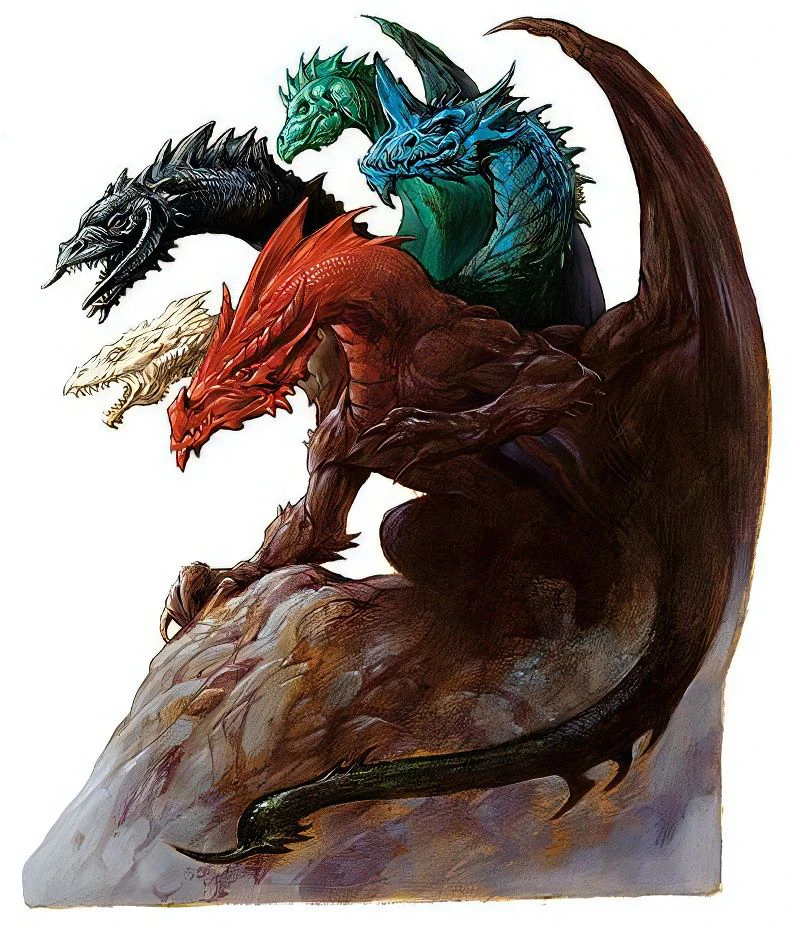
No comments:
Post a Comment